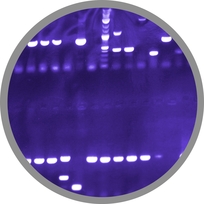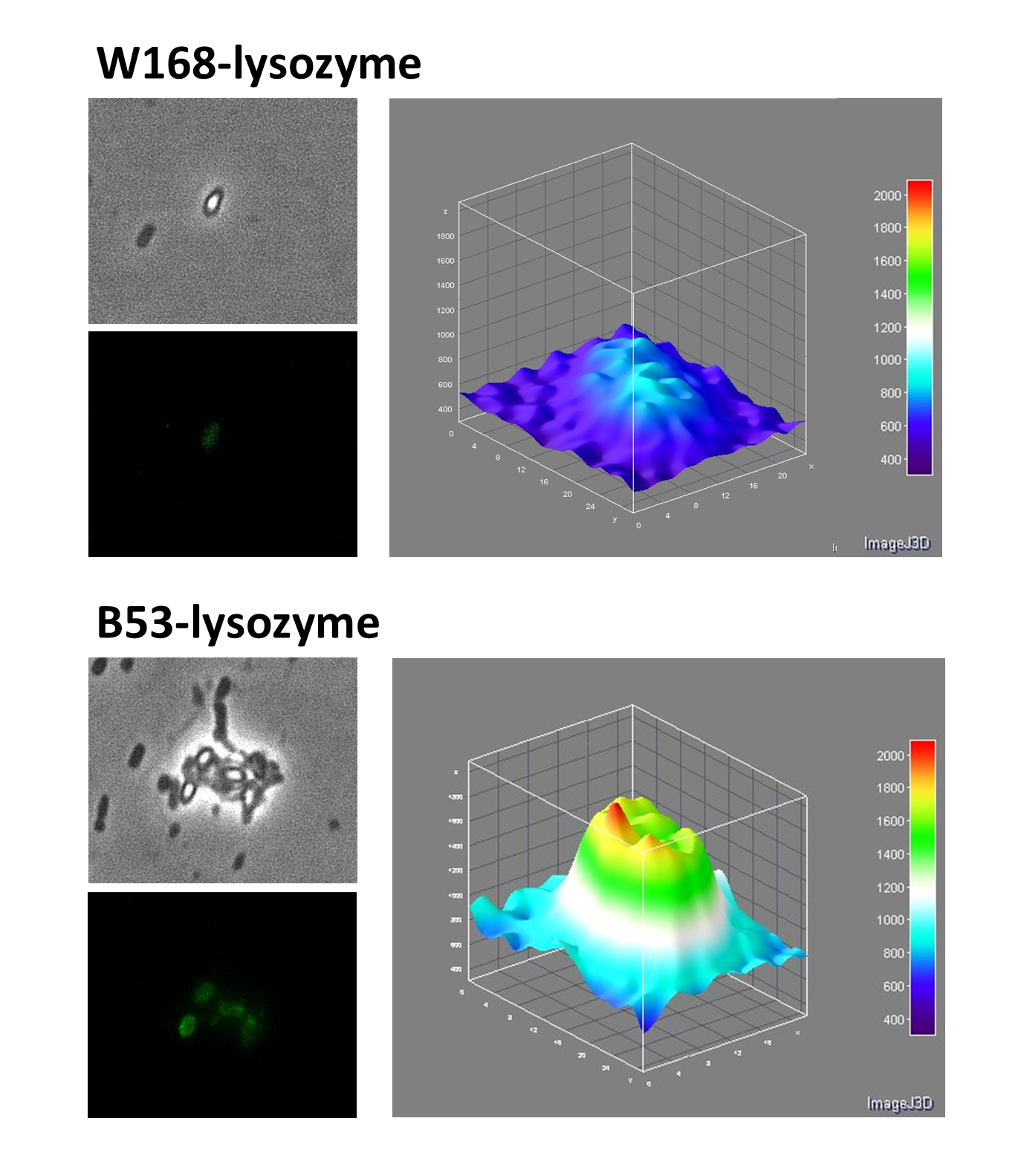Team:LMU-Munich/Data/Sporepurification
From 2012.igem.org
Franzi.Duerr (Talk | contribs) |
|||
| Line 68: | Line 68: | ||
| - | <p align="justify">The table shows that after treatment with French Press and ultrasound the number of spores compared to the untreated samples was increased. We assume the reason for this was the impurity of these samples that derived from damaged vegetative cells. Thus, during counting it was not always possible to distinguish between mature spores and cell waste. However, a huge difference in number of vegetative cells and spores between untreated and lysozyme treated samples was noticeable under microscopy as it is visualized in the table above and the pictures below. Because the vegetative cells were lyzed and not damaged it was easy to recognize the mature spores. | + | <p align="justify">The table shows that after treatment with French Press and ultrasound the number of spores compared to the untreated samples was increased. We assume the reason for this was the impurity of these samples that derived from damaged vegetative cells. Thus, during counting it was not always possible to distinguish between mature spores and cell waste. However, a huge difference in number of vegetative cells and spores between untreated and lysozyme treated samples was noticeable under microscopy as it is visualized in the table above and the pictures below. Because the vegetative cells were lyzed and not damaged it was easy to recognize the mature spores. In figure 2 phase contrast pictures of samples after treatement with French Press, ultrasound and lysozym are shown. |
</p> | </p> | ||
| Line 84: | Line 84: | ||
|} | |} | ||
|} | |} | ||
| + | |||
| + | <p align="justify">The microscopy pictures support the results of figure 1, that the only successful treatment was the one with lysozyme. This is why we tested additionally the fluorescence of Sporobeads treated with it. It revealed that the lysozyme did not harm the fusion protein as fluorescence was detected (see figure 3).</p> | ||
| + | |||
| + | {| style="color:black;" cellpadding="3" width="70%" cellspacing="0" border="0" align="center" style="text-align:left;" | ||
| + | | style="width: 100%;background-color: #EBFCE4;" | | ||
| + | {| | ||
| + | |[[File:Fluorescence after lysozyme.png|300px|center]] | ||
| + | |- | ||
| + | | style="width: 70%;background-color: #EBFCE4;" | | ||
| + | {| style="color:black;" cellpadding="0" width="70%" cellspacing="0" border="0" align="center" style="text-align:center;" | ||
| + | |style="width: 70%;background-color: #EBFCE4;" | | ||
| + | <font color="#000000"; size="2">Fluorescence of wildtype spores and '''Sporo'''beads after treatment with lysozyme. '''Sporo'''beads still show fluorescence activity. </font> | ||
| + | |} | ||
| + | |} | ||
| + | |} | ||
| + | |||
Revision as of 15:02, 26 September 2012

The LMU-Munich team is exuberantly happy about the great success at the World Championship Jamboree in Boston. Our project Beadzillus finished 4th and won the prize for the "Best Wiki" (with Slovenia) and "Best New Application Project".
[ more news ]

Sporobead purification
To purify our spores from the vegetative cells we treated the samples, that were grown for 24 hours in DS-Medium, with three different methods. The data is summarized in the following table:
| all cells | mature spores | immature spores | |
|---|---|---|---|
| untreated wildtype | 7.29 x 108 /ml | 1 x 108 /ml 13.71% | 0.04 x 108 /ml 0.55% |
| untreated PcotYZ-cotZre-gfp-terminator | 6.79 x 108 /ml | 1 x 108 /ml 14.72% | 0.13 x 108 /ml 1.9% |
| French Press wildtype | 4.87 x 108 /ml | 2.1 x 108 /ml 43% | 0.05 x 108 /ml 1% |
| French Press PcotYZ-cotZre-gfp-terminator | 4.75 x 108 /ml | 1.88 x 108 /ml 39.58% | 0.05 x 108 /ml 1% |
| Sonification wildtype | 4.6 x 108 /ml | 1.22 x 108 /ml 26.52% | 0.1 x 108 /ml 2% |
| Sonification PcotYZ-cotZre-gfp-terminator | 6.72 x 108 /ml | 1.53 x 108 /ml 22.77% | 0.23 x 108 /ml 3% |
| Lysozyme wildtype | 2.48 x 108 /ml | 1.58 x 108 /ml 63.7% | 0 /ml |
| Lysozyme PcotYZ-cotZre-gfp-terminator | 1.05 x 108 /ml | 1.05 x 108/ml 100% | 0 /ml |
The table shows that after treatment with French Press and ultrasound the number of spores compared to the untreated samples was increased. We assume the reason for this was the impurity of these samples that derived from damaged vegetative cells. Thus, during counting it was not always possible to distinguish between mature spores and cell waste. However, a huge difference in number of vegetative cells and spores between untreated and lysozyme treated samples was noticeable under microscopy as it is visualized in the table above and the pictures below. Because the vegetative cells were lyzed and not damaged it was easy to recognize the mature spores. In figure 2 phase contrast pictures of samples after treatement with French Press, ultrasound and lysozym are shown.
|
The microscopy pictures support the results of figure 1, that the only successful treatment was the one with lysozyme. This is why we tested additionally the fluorescence of Sporobeads treated with it. It revealed that the lysozyme did not harm the fusion protein as fluorescence was detected (see figure 3).
|
 "
"






